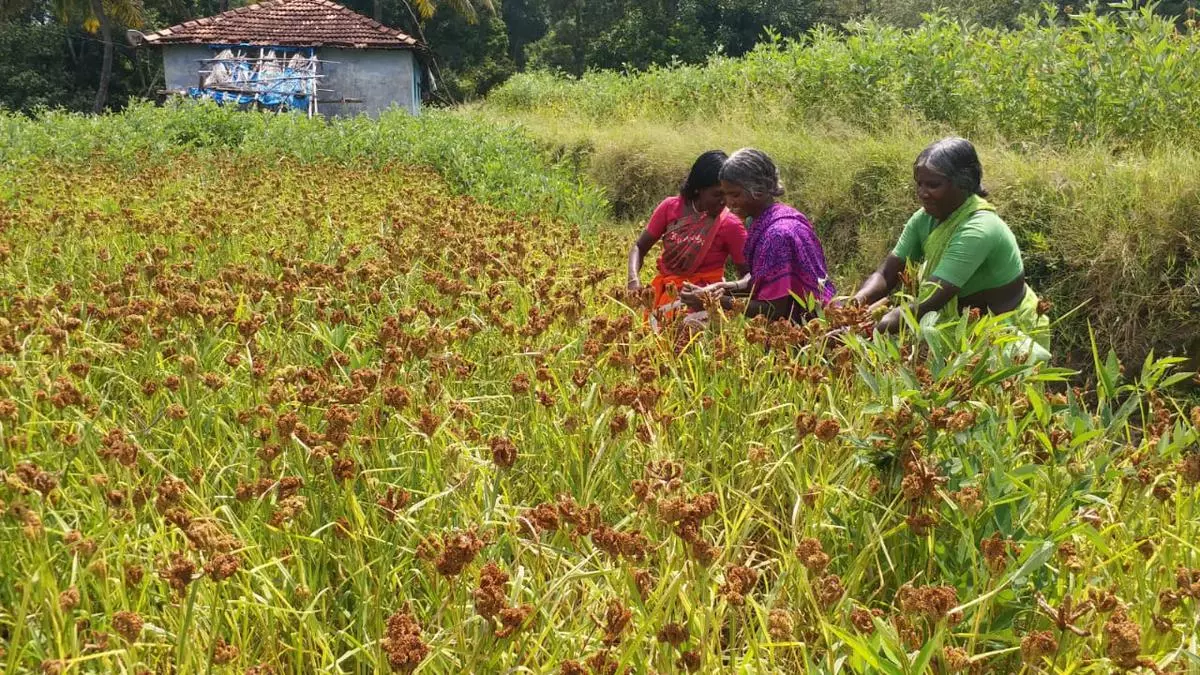Kerala to cash in on Centre’s affinity for millets
The Centre’s initiative to popularise the growing of millets has spurred Kerala to raise its millet acreage in Attapadi, the only tribal taluk in Palakkad district.
The plan is to enhance the area of cultivation under the Attapadi Millet Village project to 3,000 hectares from the present 1,200 hectares. “We would be able to achieve the target as the yield in the first crop season in April-May-June planting is encouraging with an expected production of 520 tonnes vis-a-vis 720 tonnes in the two crop season last year,” R. Latha, Assistant Director of Agriculture, Attapadi told businessline.
The Kerala government had started the Millet Village project among the tribes in Attapadi in 2017 by focussing on their health and livelihood aspects. It commenced much before India declared 2018 as the year of millets and the UN declared the International Year of Millets in 2023.
Because of the traditional crop, Latha said the productivity was comparatively less due to lack of intense cultivation practices. Besides, the threat of wild animals also forced farmers to abandon the crop. The availability of essential commodities to tribals through the Public Distribution System was also a contributing factor for farmers losing interest in millet cultivation.
Measures to encourage
However, the government has come up with measures with subsidies to encourage millet farming by protecting farmlands through the installation of fences like electronic, beehive, solar, etc to scare away animals. This has encouraged farmers to take up cultivation.
Kerala’s procurement price of millets is also the highest in the country at ₹40 per kg compared to ₹25 in other states. The produce from organic farms fetches a price tag of ₹60.
Currently, 192 tribal settlements are engaged in millet farming in Attapadi spearheaded by both State Agriculture Department as well as the Scheduled Tribes Department producing ragi, little millet (chama), barn-yard millet, fox tail millet, proso millet, sorghum, bajra, etc. Around 740 hectares of farm lands in 40 hamlets received organic certification which would be a major boost as they received higher prices, she said.
Since the present tribal farmers are getting old, Latha emphasised the need to woo younger generations into millet farming by making them familiar with value addition to earn more revenue. Today, the first priority of the yield is to address the nutritional needs of tribal people and the rest goes to the retail market.
Aimed at the export promotion of millets, Palakkad district administration conducts classes to familiarise various activities related to the shipping of products. It is also organising expos, distributing millet seeds to students to start farming at school levels. Atfam, the FPO, is also gearing up for exports on robust enquires, especially from Europe.
The Technopark-based UST and NGOs such as Thanal and Pan India jointly set up a millet processing unit in Agali town, which would benefit farmers in five tribal hamlets to avoid long distance travel for processing.
